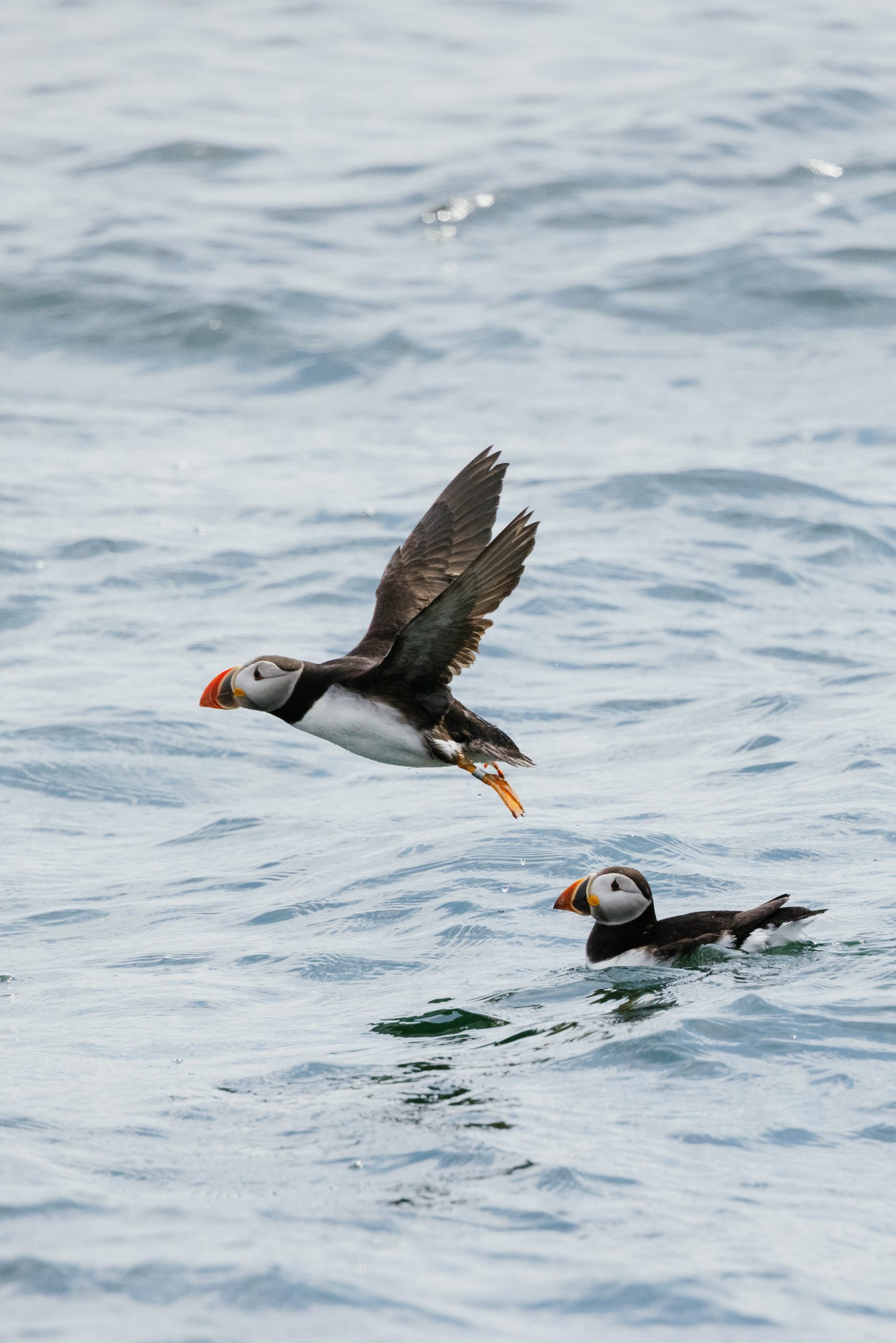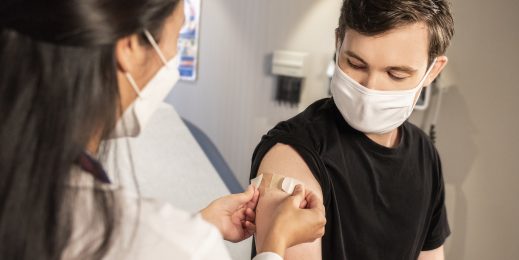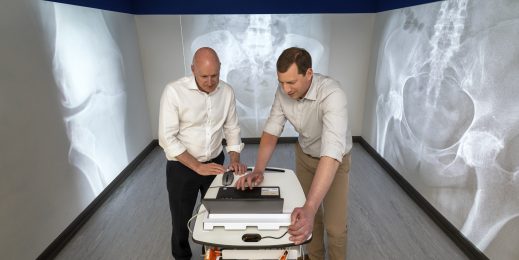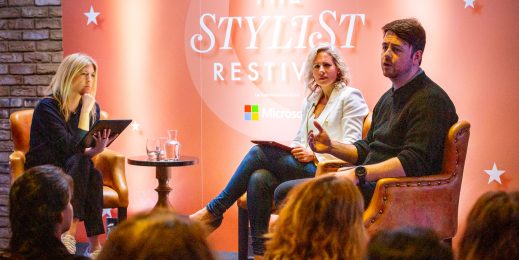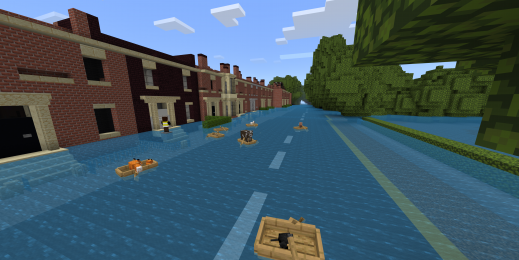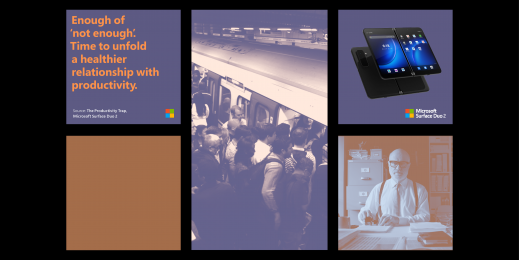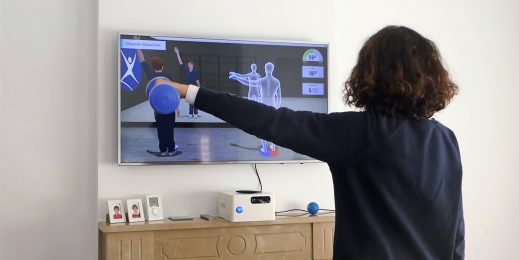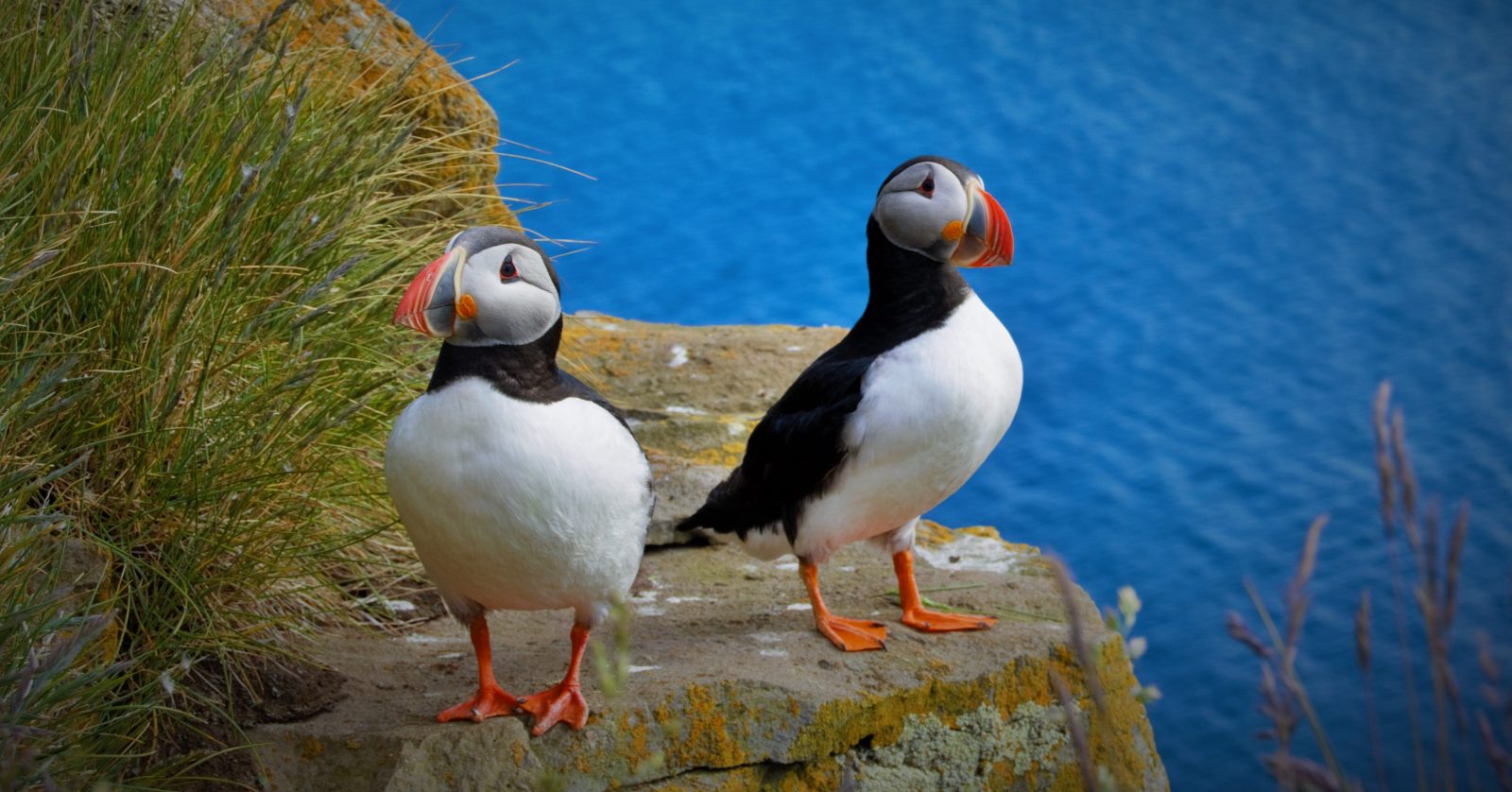
AI is helping when counting puffins is not black and white
Counting puffins is a difficult job. Traditionally, rangers must lie on the ground and put their hand into burrows to feel for a pair of puffins and their egg. As you can imagine, the birds aren’t too keen on being prodded in the comfort of their own home, and often give the invasive fingers a bite or scratch. With tens of thousands of burrows to check in an area, the rangers get through a lot of plasters.
While they are not at imminent risk of extinction, puffins are on the Birds of Conservation Concern 4 Red List, meaning that there are serious concerns over numbers in the wild. One reason for this is puffin couples only lay one egg a year. It’s why brave rangers take part in counting projects in places such as the Farne Islands, the Shetland Islands and the Isle of May, off the east coast of Scotland, to understand whether the population is growing or shrinking.
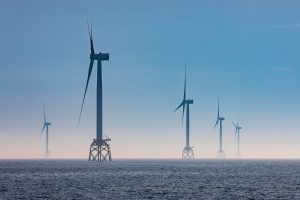
On the Isle of May, wind farm developer and operator SSE Renewables is trialling a new way to count puffins using artificial intelligence, machine learning and image recognition technology. The project, which is supported by Microsoft, Avanade and NatureScot, could transform the way animal colonies are counted when companies such as those building developments want to understand the impact on local wildlife.
SSE Renewables, part of FTSE 100 company SSE and a leader in renewable energy across the UK and Ireland, operates the Beatrice offshore windfarm – Scotland’s largest operational offshore wind energy site – around 200 miles from the Isle of May. It’s also building the world’s largest offshore windfarm at Dogger Bank, off the coast of Yorkshire; Scotland’s largest offshore windfarm at Seagreen, off the coast of Angus; and what is set to be one of Europe’s most productive onshore windfarms – Viking, in the Shetland Islands.
Click here to read a case study of how Microsoft and SSE are working together on sustainability
The company sees sustainability as a top priority and is working with Microsoft to identify, develop and deploy innovative solutions aligned to joint zero-carbon ambitions. The pair will look to collaborate, share knowledge and develop potential initiatives to drive operational efficiency through renewable energy, decarbonisation and digital solutions.
In the meantime, the work being done on the Isle of May to spot, recognise and count puffins using technology could help minimise disruption to birds’ breeding and feeding habits as those sustainability projects move forward.
“As the investment in renewable energy continues, it’s ever more important to ensure that developments, like windfarms, are not having any detrimental environmental effects,” said Simon Turner, CTO of Data and AI at Avanade. “This particular area on the Isle of May attracts many puffins each year to breed and it’s key to ensure that with the planning of any new windfarms this is not interrupted. To monitor the puffin population on the island, NatureScot would normally send people with clipboards to sit for hours, marking down how many puffins they saw. With SSE Renewables, we saw an opportunity to use technology to make this process more accurate, more efficient and less invasive for the puffins. Using cameras and AI, we are now able to count the number of puffins and monitor their burrows all day, every day, without going near them.”

SSE Renewables and Avanade have placed four cameras in stainless steel boxes on the island to capture live footage of the puffins, after they begin their return to land to breed in late-March/early-April following eight months at sea. They will make the island their home for the spring and summer months – using the same burrows as previous years – before returning to the sea in mid-August.
Each box has a condensation heater, wipers to cope with the miserable or “dreich” weather (as the Scots call it) and a backup power supply. The data captured by the cameras is stored in a Microsoft Azure Data Lake and uses the Azure Kubernetes Service, which has the power and elasticity to handle huge amounts of information.
Clare Barclay, Chief Executive Officer at Microsoft UK, said: “SSE and Microsoft hold the joint ambition to prioritise, enhance and support sustainability in the energy sector. We are proud to be working closely together through our partnership to achieve these goals in the short, medium and long term. The innovative puffin monitoring project on the Isle of May demonstrates the impact technology can have on advancing sustainability and is just one initial example of how we are collaborating with SSE to shape a more sustainable future.”
Avanade and SSE Renewables have trained the artificial intelligence using an “image recognition” model, which is fed simple pictures until it learns to recognise structures such as lines, squares and circles. Subsequent images become more complex, allowing the AI model to recognise objects. Finally, the model was fed images of puffins and other, random images and told which were puffins and which were not. When the cameras on the Isle of May are turned on, the AI will be able to spot the puffins, separate them from background images such as rocks, and track them, frame by frame, as they move around.
With around 80,000 puffins recorded on the 140-acre island in March 2020, making it the third largest colony in the UK, the AI certainly has its work cut out to keep track of all the birds.
“The AI will draw a box around each puffin it spots and give them unique tags like ‘001, 002, 003’ etc,” Turner added. “When the camera moves to the next frame, the AI understands that the puffin closest to a particular box is the same puffin, it’s just taken a step to the left or right, so it redraws the box around the bird. This happens over and over again for every frame of the footage. Even if the puffin flies out of the frame, the AI system will recognise where it flew out of sight, and attempt to track it again if it comes back. That’s how we can track and count individual puffins.”
Puffins are mostly nocturnal when they nest on land, so the researchers had to adjust the camera’s brightness and resolution settings to capture footage of the birds. They couldn’t use night vision as the AI model had been trained on images of puffins taken in daylight.
They have very good vision, so can see well at night. However, SSE Renewables is keen to find out if its Beatrice windfarm is affecting the birds’ flightpaths as the travel to gather food to take back to their burrows.
Beatrice, located 13km off the Caithness coast, is comprised of 84 turbines, each with a 154-metre diameter rotor. A joint venture between SSE Renewables, Red Rock Power, The Renewables Infrastructure Group and Equitex, Beatrice became operational in 2019 and can produce 588 megawatts of energy – enough to power up to 450,000 homes. The electricity generated by the turbines travels along subsea and underground cables before coming ashore near Keith in Moray and connecting to the Blackhillock substation.
Oliver Abell, Account Manager at SSE Renewables’s Engineering Centre, said: “We wanted to improve our environmental monitoring so we can be more proactive in that area. It’s part of a digital transformation at SSE Renewables that Microsoft and Avanade have been helping us with. They showed us a lot of technology that could help us to meet our objectives and worked with our staff to show them how they could utilise that tech. There’s no way SSE Renewables could have started the AI puffin counting project on our own; we’re an energy company, not a technology company. Microsoft and Avanade have been critical pieces of this project.”
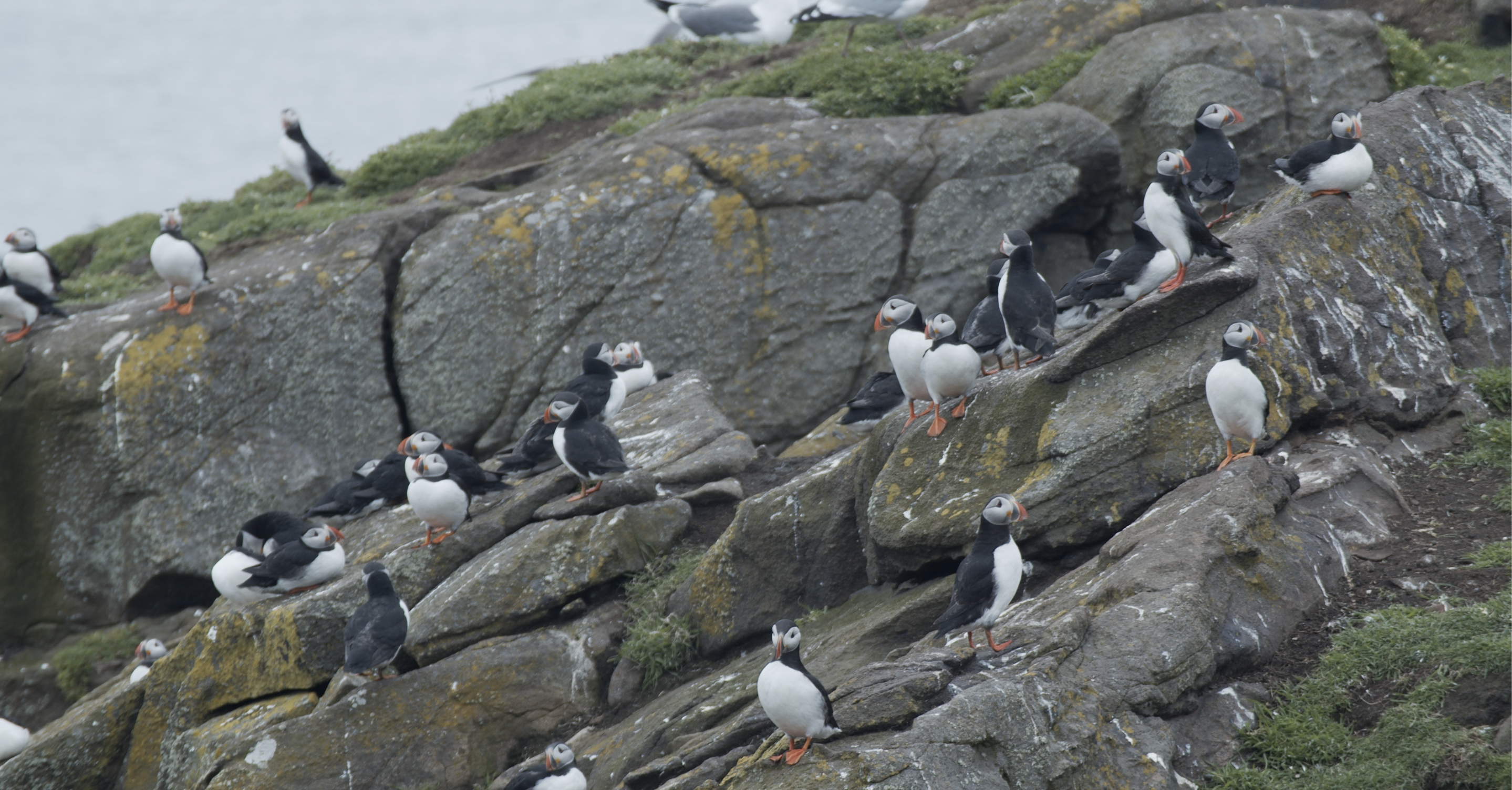
Along with new technology and digital skills, SSE Renewables has also embraced a new way of working. Staff from different teams were brought together in a “flying squad”, which espoused working in a fast, agile and open way to tackle problems. The Isle of May project was their first mission.
Rachel McEwen, SSE’s Chief Sustainability Officer, said: “As a leading generator of renewable electricity and one of the largest electricity network companies in the UK, our assets impact on the environment, from reducing the effects of global climate change to supporting local habitats.
“The impacts of our hydro and wind farm operations and our electricity networks need to be actively managed and initiatives like the Flying Squad show there are opportunities to protect and enhance habitats as we harness natural resources such as water and wind for renewable energy generation.”
Getting consent from authorities for a windfarm can take 10 years, Abell added, with a lot of that time spent addressing environmental concerns and the effect on wildlife. If they can speed up the time it takes to build windfarms, they can generate more renewable energy and support the UK’s move towards becoming greener.
While the Isle of May project is focused on puffins, there are hopes that it could be used to monitor other animals who may be affected by developments.
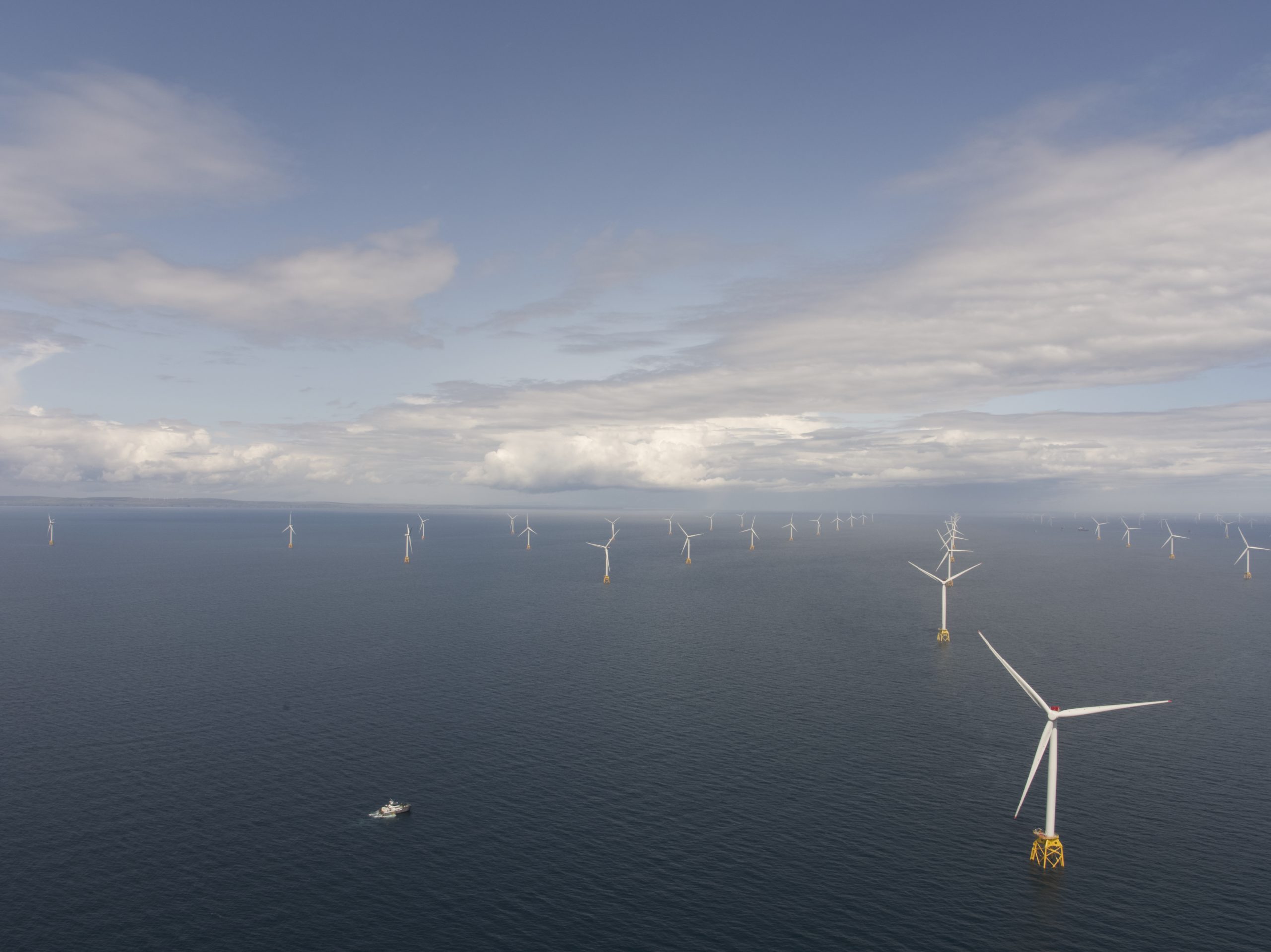
“We could monitor salmon to make sure they are able migrate in rivers, for example,” Abell added. “This technology could work in any environment in which you want to be able to monitor a species and be hands-off, either because it’s too remote or because you don’t want humans interfering in that environment.”
Having hatched and raised their pufflings (baby puffins), the puffins have now left the Isle of May for another season. SSE Renewables, Microsoft and Avanade will now look at the data to learn if their AI project has been a success.





